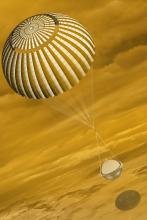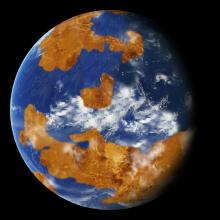Listen to today's episode of StarDate on the web the same day it airs in high-quality streaming audio without any extra ads or announcements. Choose a $8 one-month pass, or listen every day for a year for just $30.
You are here
Moon and Venus
Venus demonstrates that looks aren’t everything.
The planet is named for the Roman goddess of love and beauty — derived from the Greek goddess Aphrodite. And just seeing it in the sky explains why it got that name. It’s the brightest object in the night sky other than the Moon. Right now, it’s the “morning star” — a light so bright you might not believe it’s a planet.
Venus shines so brightly because it’s close to Earth and the Sun, and because it’s covered by an unbroken layer of clouds. As you dive into and below the clouds, though, the planet’s image begins to change.
The clouds themselves are made mostly of sulfuric acid — not exactly a beauty treatment. And as you drop below the clouds, the atmosphere gets dense, hot, and toxic. At the surface, the temperature is about 865 degrees Fahrenheit — hot enough to melt lead. And that’s the temperature around the entire planet, both day and night.
The atmosphere is made mainly of carbon dioxide — one reason that it’s so hot. As we know from experience here on Earth, CO2 traps heat, making the surface warmer.
And the pressure is about 95 times that at Earth’s surface — the equivalent of a depth of almost two-thirds of a mile in Earth’s oceans.
So deep down, Venus is no beauty.
Still, the planet is a treat to look at. Right now, it’s near the Moon in the dawn twilight. It will stand below the Moon tomorrow, and to the upper right of the Moon on Thursday.
Script by Damond Benningfield






